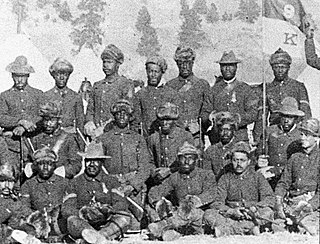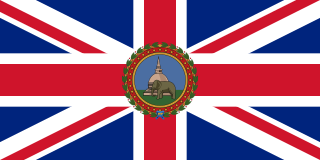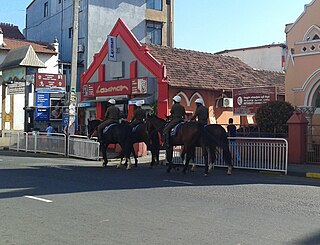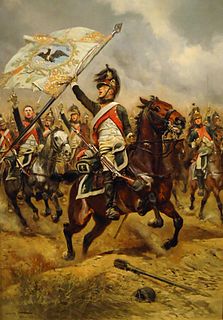
Dragoons originally were a class of mounted infantry, who used horses for mobility, but dismounted to fight on foot. From the early 18th century onward, dragoons were increasingly also employed as conventional cavalry, trained for combat with swords from horseback.
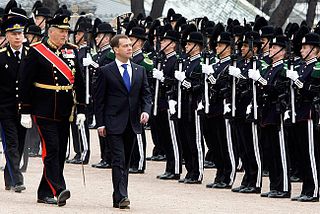
In some militaries, foot guards are senior infantry regiments. Foot guards are commonly responsible for guarding royal families, or other state leaders, and they also often perform ceremonial duties accordingly, but in the same time are combat soldiers.

Household Division is a term used principally in the Commonwealth of Nations to describe a country’s most elite or historically senior military units, or those military units that provide ceremonial or protective functions associated directly with the head of state.
The Household Cavalry (HCav) is made up of the two most senior regiments of the British Army, the Life Guards and the Blues and Royals. These regiments are divided between the Armoured Regiment stationed at Combermere Barracks in Windsor and the ceremonial mounted unit, the Household Cavalry Mounted Regiment, garrisoned at Hyde Park Barracks in London. The Household Cavalry is part of the Household Division and is the Queen's official bodyguard.

A lancer was a type of cavalryman who fought with a lance. Lances were used in mounted warfare by the Assyrians as early as 700 BC and subsequently by Greek, Persian, Gallic, Chinese, and Roman horsemen. The weapon was widely used in Asia and Europe during the Middle Ages and the Renaissance by armoured cavalry, before being adopted by light cavalry, particularly in Eastern Europe. In a modern context, a lancer regiment usually denotes an armoured unit.
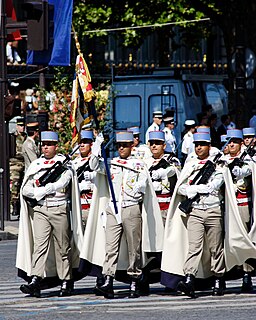
Spahis were light cavalry regiments of the French army recruited primarily from the indigenous populations of Algeria, Tunisia and Morocco. The modern French Army retains one regiment of Spahis as an armoured unit, with personnel now recruited in mainland France. Senegal also maintains a mounted unit with spahi origins as a presidential escort: the Red Guard.
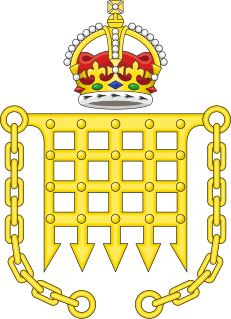
Her Majesty's Body Guard of the Honourable Corps of Gentlemen at Arms is a bodyguard to the British Monarch. Until 17 March 1834, they were known as The Honourable Band of Gentlemen Pensioners.

The Life Guards (LG) is the senior regiment of the British Army and part of the Household Cavalry, along with the Blues and Royals.

Imperial Japanese Army uniforms tended to reflect the uniforms of those countries who were the principal advisors to the Imperial Japanese Army at the time.
The Blue Hussars, officially called the Mounted Escort, was a ceremonial cavalry unit of the Irish Army established in 1932. It escorted the President of Ireland on state occasions, most famously to and from presidential inaugurations between 1938, when the first president took office, and 1948 when the Escort was disbanded.

The Belgian Royal Escort is a horse- and motorcycle-mounted unit that accompanies the Belgian monarch on ceremonial occasions. It also provides escorts for foreign visiting heads of state and ambassadors presenting their credentials at the Royal Palace in Brussels.

Full dress uniform or parade dress uniform is the most formal type of uniforms used by military, police, fire and other public uniformed services for official parades, ceremonies, and receptions, including private ones such as marriages and funerals. Full dress uniforms typically include full-size orders and medals insignia. Design may depend on regiment or service branch, e.g. army, navy, air force, marines, etc. In Western dress codes, full dress uniform is a permitted supplementary alternative equivalent to the civilian white tie for evening wear or morning dress for day wear – sometimes collectively called full dress – although military uniforms are the same for day and evening wear. As such, full dress uniform is the most formal uniform, followed by the mess dress uniform.

The uniforms of the British Army currently exist in twelve categories ranging from ceremonial uniforms to combat dress. Uniforms in the British Army are specific to the regiment to which a soldier belongs. Full dress presents the most differentiation between units, and there are fewer regimental distinctions between ceremonial dress, service dress, barrack dress and combat dress, though a level of regimental distinction runs throughout.

The 1st Horse is a cavalry regiment of the Indian Army, which served in the British Indian Army before independence. The regiment was raised in 1803 as Skinner's Horse by James Skinner as an irregular cavalry regiment in the service of the East India Company. It was later renamed the 1st Bengal Lancers.

The modern Greek Army has a history of over 180 years, during which has undergone dramatic changes and been involved in some of the major conflicts on the European continent. The modern Greek military throughout its history was closely following international developments in equipment and uniforms. With the notable exception of the elite Evzones units, which based their uniforms on the indigenous traditional garments of the 18th century, the rest of the Army, as most militaries worldwide, was always quick to adopt the military fashion current among the armies of the influential Great Powers. This influence can be roughly divided in three periods: French-style uniforms, which dominated throughout the 19th century, the British styles introduced around World War I and used during World War II and until the late 1960s, and the "NATO" or US-style predominating from ca. 1968 onward. Various individual items or details can of course be traced to other influences, and there were also transitional uniforms combining previous designs.

A dragoon helmet was an ornate style of metal combat helmet featuring a tall crest; they were initially used by dragoons, but later by other types of heavy cavalry and some other military units. Originating in France in the second half of the 18th century, it was widely imitated by other European armies and was last used in combat in 1914. Some military units continue to wear this style of helmet for parades and other ceremonial duties.

The uniforms of the Sri Lanka Army currently exist in several categories ranging from ceremonial uniforms to combat dress.
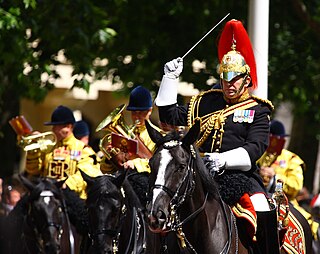
The Mounted Band of the Household Cavalry is a British military band which ceremonially serves the Household Cavalry Mounted Regiment (HCMR). The HCMR Band is the largest symphonic wind band in the British Army and the foremost Mounted band in the armed forces. It is one of the reserve bands in the Corps of Army Music (CAMUS) and is currently based at Hyde Park Barracks and Combermere Barracks.
